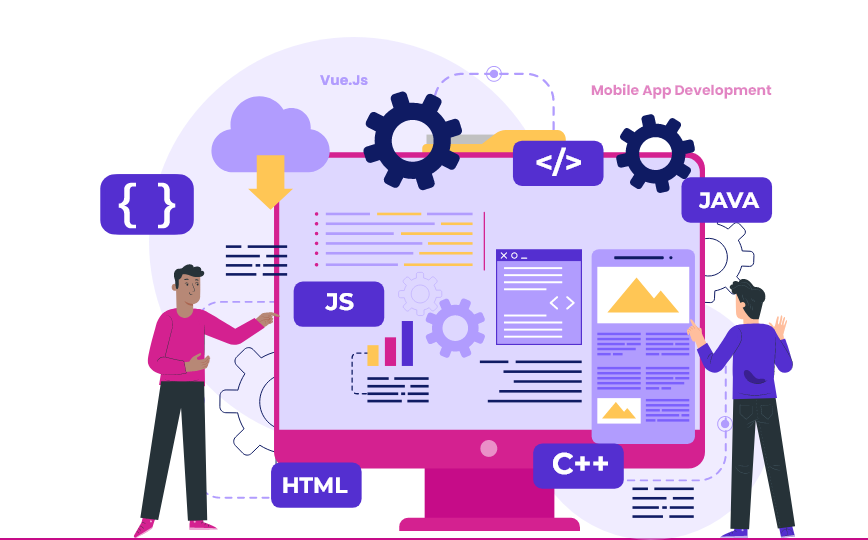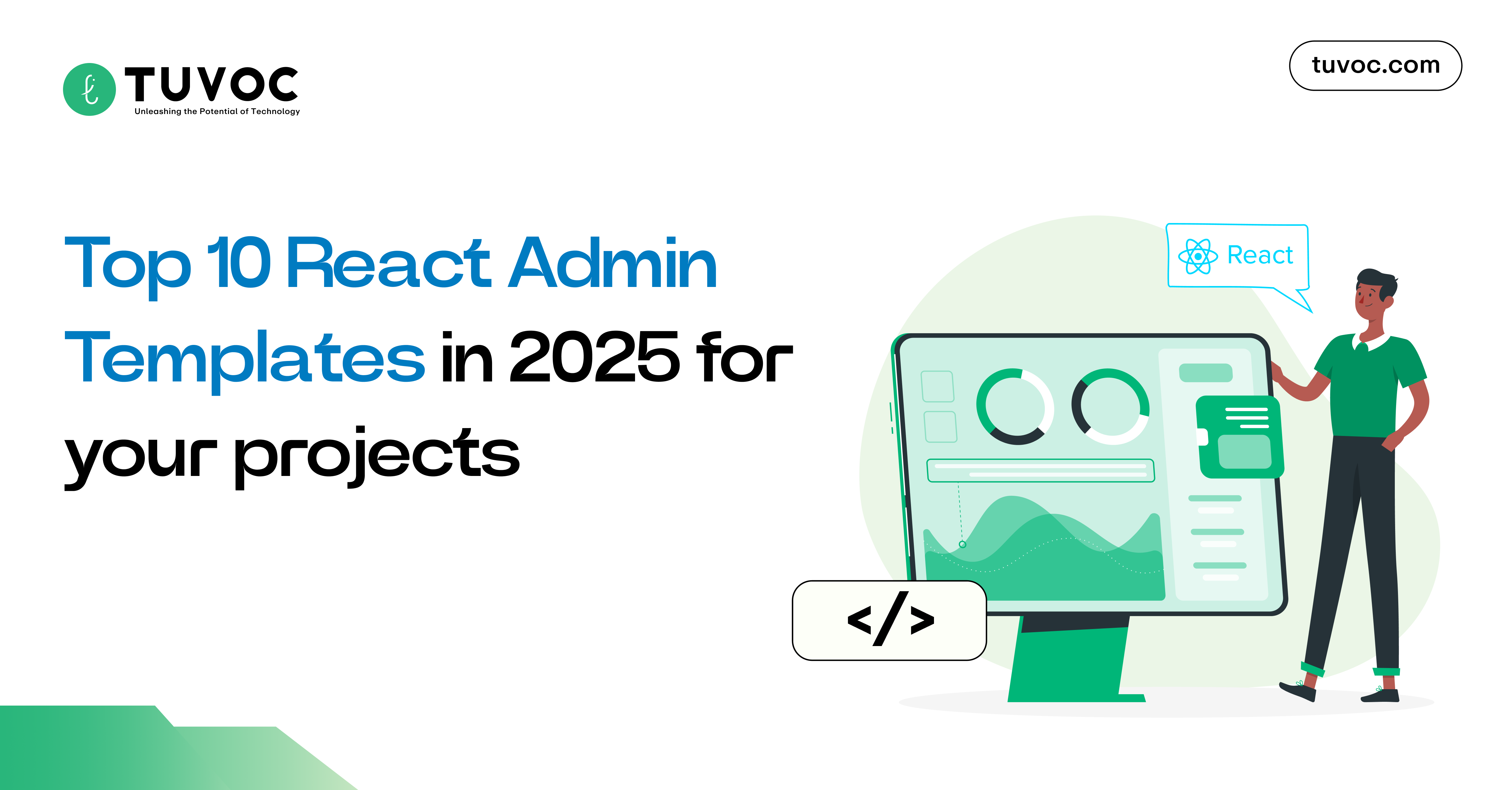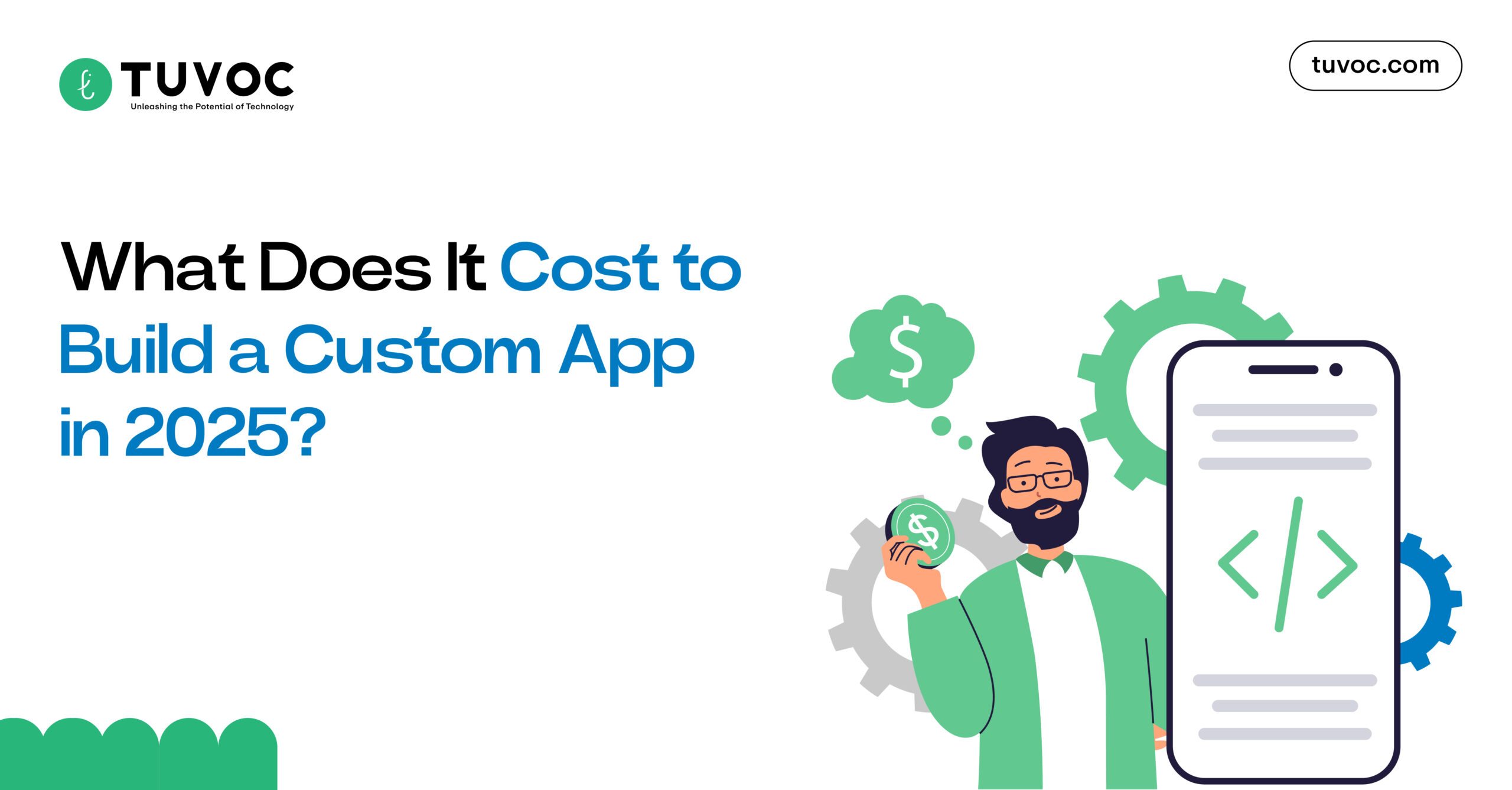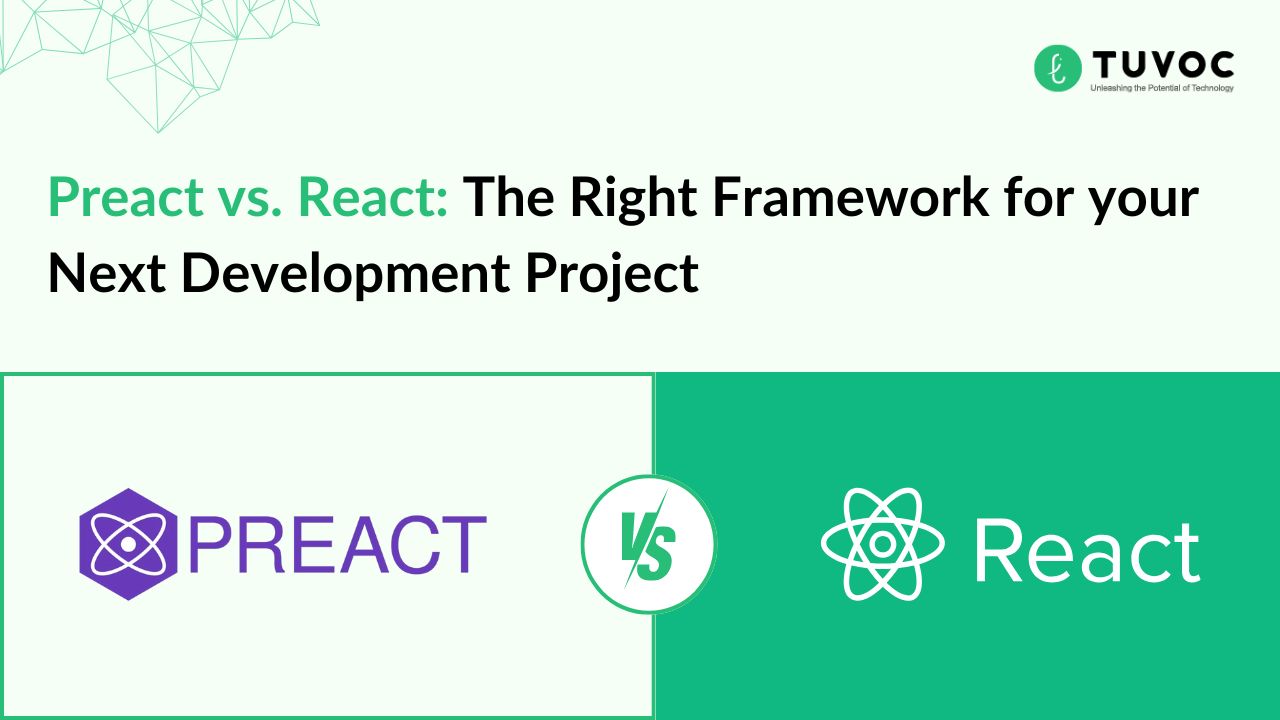Why Use Vue.Js Frameworks for Mobile App Development?

An Introduction to Vue.Js
Vue.js is an open-source JavaScript framework to build single-page applications and user interfaces. However, it can also help you create native-looking mobile applications on its own. Today, we will discuss why Vue.js frameworks make a great choice for mobile application development.
Why Vue.Js for Mobile App Development?
Here are the top reasons for using Vue.js frameworks for mobile application development.
Developing Apps for Both iOS & Android
Cross-platform development saves a lot of time for the development team. A single application is built to run on both iOS and Android without worrying about the platform it will run on. Compare it to Java for Android and Swift for iOS development. Vue helps you develop cross-platform mobile applications.
Technologies You’re Already Familiar With
Learning to work with any framework is easy if it’s written in a technology you are already familiar with. Since Vue’s codebase is something you’d already know (HTML, CSS, JavaScript), it’s easy to learn.
Great Documentation from Front-end Community
When technology is complemented with good documentation, it makes development efficient and increases the productivity of your development team. Great documentation from the frontend community is surely one of the standout features of Vue development.
Now that you know the technical reasons, let’s explore some of these frameworks to understand what value they can add to your mobile application.
Frameworks to Use with Vue.Js for Mobile App Development
Framework7 Vue
Framework7 can be used with Vue.js, Svelte, JavaScript, and React. If you want your apps to look and feel native, Framework7 is an open-source and free framework for you. It offers really attractive UI kits and can be used to build a UI that looks and works like a native.
For example, instead of using an HTML button for your application, you can go for the f7 button for better results and compile it for both Android and iOS mobile applications.
Moreover, even though navigation and routing are done through the f7 router of the Framework7 router, the API is similar to the Vue router itself. There is one caveat though. Framework7 accesses native APIs for mobile devices via Apache Cordova.
This means you may worry about Cordova getting out of date and stopping supporting some of the features of your application built with Framework7. This is where our next framework option comes in handy: Ionic Vue, it has Capacitor for its official runtime.
Ionic Vue
If you aim to develop high-quality and cross-platform mobile applications, Ionic is your option. It can build your applications using the technologies you may already be familiar with- HTML, CSS, and JavaScript. It works with Angular, JavaScript, Vue, and React.
The framework comes with many premade UI component sets which will help you build great native applications quickly. Moreover, the components of Ionic will render differently based on the platform your user is on. For Android and iOS both, the UI components will render accordingly.
Coming back to framework7’s caveat with Apache Cordova, Ionic’s own Capacitor lets you access the native API of the device to create native mobile applications. Ionic is one of the newer technologies on the list, it is easy to learn if you have a working knowledge of Vue 3.
NativeScript Vue
A framework that is a combination of Vue and NativeScript in one, NativeScript is an open-source framework that allows you to build Android and iOS, cross-platform mobile applications with Vue.
Like Ionic and f7, this framework is also compatible with Angular, JavaScript, and Vue.js. However, contrasting to the former two, this framework does not enable you to use HTML elements. A developer has to use NativeScript UI components to build the UI of the application.
With NativeScript, a tool like ‘Playground’ enables developers to get familiar with how NativeScript works. You can choose the Vue template and build NativeScript Vue applications to develop cross-platform mobile applications.
Quasar Framework
A great UI library to build cross-platform applications using Vue.js, the Quasar framework lets you choose between Capacitor and Cordova to run your web apps as native mobile applications.
Quasar also enjoys widespread community support. Only Quasar and Ionic support Vue 3, providing the developers with access to the high-quality features of Vue 3. With its prebuilt UI components, it makes the life of the developer quite easy. Without worrying about the component building, they can focus on customizing and app logic more.
Quasar shares a number of similarities and benefits with Ionic Vue. It comes with several attractive and effective UI components to build mobile application user interfaces. It lets the application access native API to behave differently on both iOS and Android.
However, the similarities end here. With Quasar, a developer will have to install Cordova or Capacitor, set up the configs, and then install the Quasar framework manually. By default, it cannot render components based on the OS. since it comes with Material Design style, Android users may not feel any difference, but it may feel out of place on iOS devices.
Vue Native
With Vue Native, you can achieve everything that you can achieve with React native. The code is compiled down to React Native, too. Vue Native, a wrapper around React native, enables you to build cross-platform mobile applications with Vue.js.
Vue Native CLI will get you started with Vue Native, to generate simple yet attractive one-page applications with Expo CLI or React Native CLI. Just install one of these CLIs to use Vue Native CLI.
The device APIS and packages are already covered by React Native communities, so you will already be covered there in terms of community. You can also build UI components with the NativeBase React component.
Here, since Vue Native depends on React Native and Expo, the growth of the framework is also directly related to the growth of React Native. This can be a good or a bad thing depending on how you look at it. The relation also enables developers to use React Native libraries. React is one of the most popular ways today to develop mobile applications using JavaScript.
However, the projects you develop could not be run in a browser. Android Studio or Xcode will be required to get the previews. The components will also not work with web development since the framework is mobile only.
Sure, these frameworks make a solid case for why you should use them for mobile application development. However, your needs will dictate which one is for you. Here’s how to decide.
Which Vue.Js Framework Is For You?
Looking at the available options, it is easy to get confused with the framework to choose. Each of them comes with its own advantages, but one may be the perfect choice for your specific needs. It would be unfortunate if you choose a framework and realize its limitations for your use case when it’s too late. Here are some factors to consider when choosing Vue.Js Frameworks For Mobile App Development.
Framework Community
Whenever you get stuck developing a mobile application, the framework’s community support will help you find the bug, fix them, and keep your code clean. It will help you with your productivity as well. Here is how each framework stands:
| Framework | Contributors | Releases | Stars on GitHub | Forked by No. of Users |
| Vue Native | 15 | 8 | 7.9K | 291 |
| Ionic | 401 | 284 | 43.2K | 13.4K |
| NativeScript | 43 | 95 | 4.6K | 224 |
| Framework7 | 134 | 222 | 16.1K | 3.3K |
| Quasar | 412 | 436 | 18.2K | 2.2K |
Native Tools
It is important to know which framework will offer you which features. Native tooling will help you add project-specific features to your application.
Ionic, Quasar, and Framework7 have Cardova which can be used for native APIs. With Ionic and Quasar, additional features of Capacitors can also come in handy.
Vue Native has tools from both Expo and React Native, which are extremely feature-rich.
NativeScript Vue has NativeScript plugins that enjoy large and active community support.
Design Components
All of the frameworks that we have discussed have great UI components for attractive front-end designs. If you have moderate familiarity with Vue 3, Ionic Vue can be your choice. Framework7’s core components can be used in mobile applications, and it will work on your Vue.js apps without any hiccups.
NativeScript does not have as many components as Ionic and Framework7, but the components render based on the OS. Quasar components do not render based on the platform but will have Material Design look regardless of the platform.
Documentation
All these frameworks come with official documents and they offer fairly adequate information to the developers. Ionic has the best of all, with previews of how the components will look like. Framework7 also comes close, but in some places, you may find them incomplete. NativeScript also comes with comprehensive documentation. Vue Native, on the other hand, does not offer as much. On the contrary, Quasar offers clear information and like Ionic, it offers you how the components will look once you have built them.
Learnability
When it comes to Quasar and Framework7, the process is quite straightforward as a developer will work as they would in a Vue.js app. On the other hand, Vue Native and NativeScript come with a learning curve as some elements are different from Vue.js. Since Ionic has Vue 3, a developer will have to have an understanding of Vue 3 to work with the framework.
Conclusion
With great UI components and options to choose from, Vue.js frameworks offer a great amount of usability and versatility to your mobile application. Ionic, Framework7, NativeScript, Vue Native, or Quasar, whichever you choose, factors like community support, tooling, documentation, and the learning curve of the framework need to be considered.






